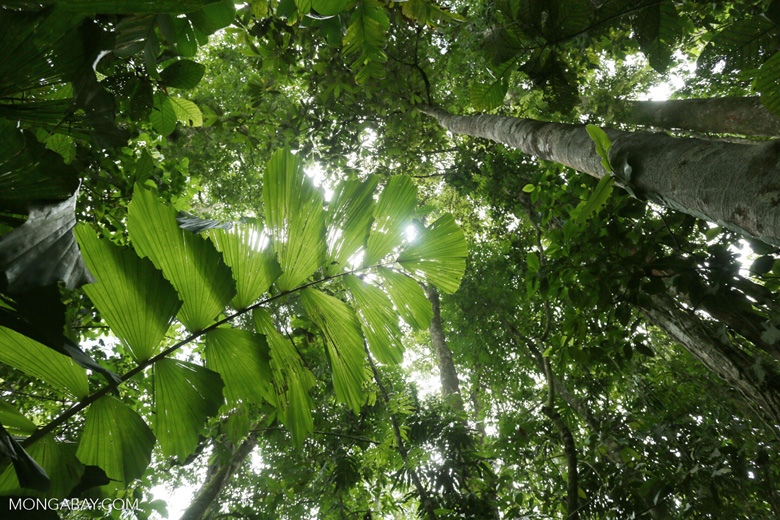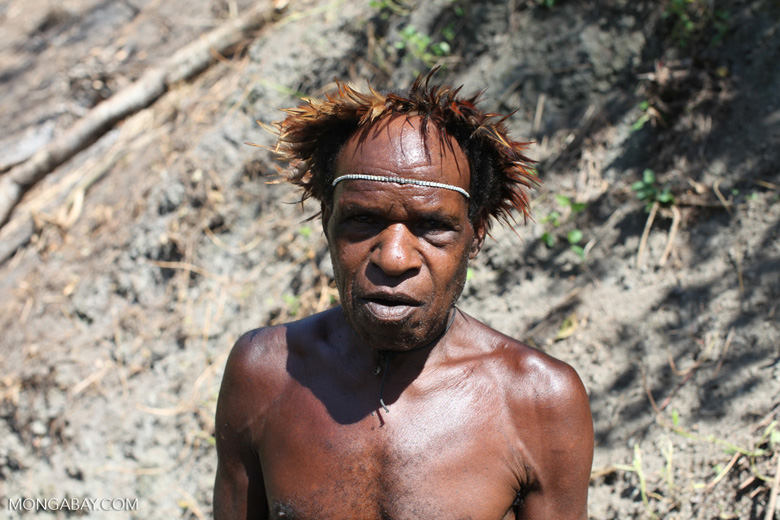- It’s easy to be pessimistic about the state of the world’s forests.
- Yet all hope is not lost. There are remain good reasons for optimism when it comes to saving the world’s forests.
- On the occasion of World Environment Day 2016 (June 5), the United Nations’ “day” for raising awareness and encouraging action to protect the planet, here are 10 forest-friendly trends to watch.
It’s easy to be pessimistic about the state of the world’s forests. Rates of forest loss remain persistently high, especially in the tropics and boreal regions. Drought, fragmentation, degradation via logging, and climate change are conspiring to make forests more vulnerable to fire: vast areas of forest went up in smoke across Canada, Russia, the United States, Indonesia, Brazil, and the Congo Basin in the past two years alone. Expanding human population and rising meat consumption are fueling a global land rush across much of the tropics. And while Brazil’s political crisis is threatening to undermine a decade’s worth of progress in curbing forest destruction, the prospect of Americans electing a president who intends to shred international climate commitments and calls for the embrace of the dirtiest of fossil fuels is downright terrifying for many environmentalists.
Yet all hope is not lost. There are remain good reasons for optimism when it comes to saving the world’s forests. On the occasion of World Environment Day 2016 (June 5), the United Nations’ “day” for raising awareness and encouraging action to protect the planet, here are 10 forest-friendly trends to watch.

1: Rising influence of activists
Over the past 30-40 years, drivers of deforestation have changed. Instead of most deforestation being caused by small farmers producing food for themselves and local markets, today deforestation in the tropics is primarily driven by commodity production for urban markets and export. That means corporations — through their supply chains — are ultimately linked to a greater share of deforestation than ever before. A byproduct of this shift is corporations have become a prime target for activists pushing for more forest-friendly sourcing practices. Indeed, campaigns by environmentalists have begun to transform how entire sectors go about producing, trading, and sourcing their commodities. The soy industry in the Brazilian Amazon was the first sector in 2006 to mandate zero deforestation. It was followed by similar commitments from major cattle players in the Amazon (2009), a number of palm oil companies (2010 to present), and the Indonesian pulp and paper industry (2013-2015). Other sectors are coming on board as well, with companies like McDonalds and Cargill pledging to cut deforestation out of supply chains ranging from coffee to cacao.

2: Corporate commitments and action
In response to environmental groups — and increasingly shareholders and local governments — companies are changing their practices. Since 2010, scores of companies have adopted “zero deforestation” policies that set social and environmental safeguards for their commodity sourcing. These range from consumer-facing companies based in the United States and Europe to multinational bulk commodity traders to in-country growers and producers. Critics rightly note that the commitment phase is much easier than the implementation phase, but words are starting to be put into action. And new technological tools are helping improve transparency around company supply chains.

3: Harnessing technology for good
In the early 2000s, Brazil was losing forest in the Amazon at a rate of 23,000 square kilometers — an area larger than Belize or the state of New Jersey — annually. In 2004, the South American country implemented a satellite-based deforestation monitoring system that enabled authorities to see where forest was being cleared on a monthly basis. Since then, the annual rate of clearing in the Brazilian Amazon has fallen 80 percent. Analysis suggests that the biggest factor in driving deforestation downwards was the satellite system, which increased transparency around forest use. Since then, technologies have only improved. Global Forest Watch, a tool developed by World Resources Institute, effectively extends Brazil’s system across the tropics, allowing near-real time monitoring of any forest. At the same time, near-surface and on-the-ground technologies ranging from camera traps to audio sensors to conservation drones have mushroomed. The proliferation of mobile phones have enabled virtually anyone to become an activist, whistleblower, or citizen journalist or scientist. Cell phones have also created unprecedented opportunities for once isolated groups and communities to connect, share knowledge, and mobilize against destructive projects.

4: Steps by governments
Like the private sector, governments seem to be taking forest issues more seriously than they did in the past. For example, the Norwegian government has committed billions toward tropical forest protection and even announced a zero deforestation procurement policy, while the U.S., European Union, and Australia have passed laws governing timber imports, attempting to close some of the loopholes that allow illegal timber imports. The crackdown on the ivory trade could help protect species with an important role in forest ecosystems: African and Asian elephants. In tropical nations, last year’s haze crisis has spurred Indonesia to pledge incredible steps to reform how forested land is used, including a peatlands restoration policy and a freeze on new palm oil concessions. If these measures are effectively implemented, it could reverse decades of forest degradation and destruction in Borneo and Sumatra.

5: Progress on climate change
Last year’s Paris agreement breathed new life into efforts to safeguard forests, which store hundreds of billions of tons of carbon. REDD+, a U.N.-led initiative that aims to create performance-based incentives for conserving forests, was one of the major advances in Paris. Curbing climate change would also help forests in other ways: models suggest warmer temperatures and increased CO2 levels heighten the risk of drought and tree die-off across large expanses of the tropics.

6: New leadership
While this topic was already touched on in point 4 above, it warrants its own call out. In the past, forest policy for tropical nations was often directed by governments and NGOs in the West, which increased animosity toward conservation, failed to stem rampant deforestation, and sometimes exacerbated on-the-ground conflict between local people and governments. However, that’s changing. Brazil has shown that it’s possible to disaggregate deforestation from economic growth, reducing deforestation in the Amazon 80 percent, while expanding agricultural production. That has offered a much more useful narrative for conservation efforts in countries like Indonesia that are prioritizing issues like rural poverty. Countries like Costa Rica (payments for ecosystem services) and Mexico (indigenous land rights) are pioneering new models that are informing policies in peer nations.

7: Traditional land rights
Two of the biggest trends in forest conservation in the past five years have been at opposite ends of the spectrum: corporate “zero deforestation” commitments and increasing recognition of the conservation value of securing land rights for forest-dependent communities, including indigenous peoples. The reason for the latter? A growing body of evidence indicating that locals do a better job of stewarding natural resources when their traditional management rights are recognized: deforestation in indigenous territories is often lower than in national parks. This recognition is now starting to happen in countries ranging from Mexico (an early leader) to Indonesia, where millions of hectares of state-owned land could potentially be turned over to indigenous control.

8: Commodity price reprieve
The global downturn in most commodities markets has stalled the massive run up in land prices in the tropics Ὰ at least temporarily. Despite a sustained rally in recent months, palm oil prices are trading at less than three-fifths their peak value of just a few years ago, while oil and gas prices remain far below early 2015 levels. Some conservationists say the commodity bust has bought time to purchase land for conservation or work to convince governments to create protected areas. Past declines have been when some commodity producers have adopted greener practices, including the soy moratorium and cattle agreement, to differentiate their product or remain competitive. Others are a bit less sanguine, arguing that reduced government revenue may spur cost-cutting for conservation or embolden industry to demand weakening of environmental laws.

9: Recognition of ecosystem services
The Paris Agreement re-ignited interest in forests for their carbon value, but broader recognition of the various services afforded by these ecosystems has been on the rise for years. Last year’s haze crisis sparked a crisis of conscience in Singapore, but also spurred awareness of the role Sumatra’s forests have in maintaining regional air quality. At the same time, Brazil’s severe drought awakened concern about the prospect of large-scale Amazon deforestation — combined with the effects of climate change — wreaking havoc on regional economies: power shortages from stalled hydropower stations, thirsty cities and empty reservoirs, parched farmlands, and transportation at a standstill due to dry riverbeds. And ever-improving science is showing that forest loss in the tropics can affect rainfall well beyond national borders — even across oceans. And yet we’re only beginning to understand what may hold the greatest value: biodiversity.

10: Restoration
Satellite imagery, better science, and growing interest in land-based solutions to mitigating climate change are spurring efforts to reverse some of the environmental damage inflicted on the planet in recent decades. The Bonn Challenge, established in 2011, aims to restore 150 million hectares of deforested and degraded lands by 2020 and 350 million hectares by 2030. While criticized by some as an wildly impossible target, countries are making significant commitments restore ecosystems, including more than 25 million hectares by governments and investors in Latin America. Perhaps the most ambitious goal was made by the Indonesian government in the aftermath of last year’s fire and haze crisis: no new planting of peatlands and restoration of all areas burned during the disaster.

Of course there are other things that should give forest fans reasons for hope: the continued expansion of protected areas, pressure from investors concerned about environmental performance, the mobilization of large amounts of money for forests by a new breed of philanthropists, and ongoing production of films and other media that showcase forests and the people and species that inhabit them. Are there things this post missed? Do you disagree? Please feel free to add your thoughts via the comment form below.